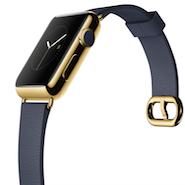- About
- Subscribe Now
- New York,
April 30, 2015

NEW YORK – The idea of luxury changes depending on who you ask, but a few core pillars tend to emerge, according to a McCann Truth Central panel at the Luxury Insights Summit 2015 April 29.
The "What is Luxury? Exploring Affluence, Exclusivity and What’s Next" session looked at the inherent atomization of the luxury industry across sectors and some emerging trends. Context reigns when discussing luxury, and brands have to be savvy to consumer nuances.
"One of the reasons that [consumers] choose to pay a premium is because they are being guaranteed, the brand is obligated to give them that choice and the freedom and flexibility to choose how they want to be associated with that brand," said Kelsi Brazell, director of marketing/brand development, Personal Style Finder, New York.
Luxury Insights Summit 2015 was organized by Luxury Daily.
Understanding context
Luxury may mean a water bottle for one person, time spent with family for another or a hassle-free private jet experience for a third. In essence, the idea of luxury depends on context.
For luxury brands, such a distinction may seem arbitrary, since each brand has a distinct value proposition that makes sense only in specific contexts.
However, understanding these distinctions can help a brand both attract and retain consumers by enabling more seamless conversations and associations.
McCann Truth Central encourages marketers to incorporate the fundamental concepts of time, freedom, family and happiness into how they think about consumers. For the affluent, time is regarded as the most precious resource, family the most important group of people and freedom the most important value, all combining to create holistic happiness.
Dolce & Gabbana family campaign on Instagram
When this triangle is understood, brands can better situate their campaigns to meet demands in various contexts.
Additionally, McCann identified three overarching attributes that elevate luxury brands above mass competitors.
The first two attributes are well known: heritage and craftsmanship. The third, however, complicates the framework: rarity.
Rarity can be categorized according to natural resources, cultural considerations, manufacturing procedures and personal preference.
Consumers tend to expect luxury goods to be made of rare resources and appreciate learning the origins of goods.
Cultural rarity involves the differing availabilities among cultures. For instance, to an American, the Scandinavian option of extended parental leave seems a dream.
Manufactured luxury is when a brand limits the output of an item. For example, Hermès only creates a handful of Birkin bags each year, generating long lines and intense anticipation among consumers.
Finally, personal rarity depends entirely on the person.
McCann also identified three emerging trends that will impact luxury in the years ahead.
The first is the idea of old versus new and the prevalence of older models taking over fashion campaigns that have traditionally been the exclusive domain of the young. Nadia Tuma, senior vice president and director of McCann Truth Central, pointed to Céline featuring author Joan Didion recently.
This trend reflects the increasing customization of marketing and the recognition that older demographics may yield greater loyalty.
Second, privacy versus publicity will clash in the years to come as consumers weight how much data they are willing to forfeit in return for heightened customer service.
"The most important thing is to be 100 percent transparent about what your policies are," said Stacey Styles, vice president and senior business leader for U.S. consumer and market intelligence, MasterCard, New York.
Third, obsolescence will contend with timelessness. Do consumers want the fleeting allure of an Apple Watch or the durable glamor of a Patek Phillipe?
Changing guards
Luxury goods are described as made by the hands of skilled artisans, but Sir Jonathan Ive of Apple argued at the Condé Nast International Luxury Conference April 22 that all devices, even those in the technology space, have handcrafted elements.
Whether the Apple Watch will prove disruptive to the traditional watch industry has yet to be determined, but the degree of quality behind Apple’s first wearable technology is clear (see story). Apple extensively researched the materials for the watch, especially its gold components, and feels that it is a false assumption to assume those in the technology space do not dedicate the same sense of quality to products as traditional luxury houses (see story).
The panel agreed that, if anything, Apple Watch will assist the watch industry by reigniting interest in the category among young consumers who may have written off timepieces. For collectors, the Apple Watch will only be an addition to already extensive collections.
Indeed, watch collectors will likely only use an Apple Watch when exercising, but when attending an event, going to dinner or to work, a traditional timepiece will be reached for.
"[Watchmakers] are not seeing it as a threat," said Sara Orlando, advertising director, WatchTime magazine. "People are opening up the conversations on watches again."
Final Take
Joe McCarthy, staff reporter on Luxury Daily, New York
Share your thoughts. Click here